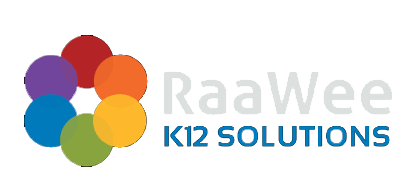Federal & State Funding Opportunities
Understanding the world of education finance can be daunting for even the most seasoned of school and district leaders. The good news is, you don’t need to be a financial wizard to make fiscal decisions that will last a lifetime for your students by investing in attendance tracking and improvement technology. Implementing a robust digital platform that includes proactive and reactive strategies, multi-tiered interventions, high quality real time data, and two-way communications has proven to be the most effective approach to truancy abatement.
While chronic absenteeism preceded the pandemic and ballooned during, it has not quite bounced back in the aftermath (if we can even say we have fully reached post-pandemic status). According to the National Center for Education Statistics (July 6, 2022) “Compared to a typical school year prior to the start of the COVID-19 pandemic, 72 percent of U.S. public schools reported an increase in chronic absenteeism among their students. So, what’s happening? That’s what we’d all like to know.
Attendance Tracking
Discovering the root causes of absenteeism, school refusal, chronic truancy, avoidance, or whatever other terms exist to describe the post-pandemic epidemic of student non-attendance is essential before allocating funding to address the issues. Since we know that there is no single or predominant reason, but rather an intricate mix of ingredients that contribute to truancy behaviors, addressing the problem systemically requires multi-pronged approaches. If we can reframe non-attendance as a symptom rather than “the problem” we can get closer to addressing the core of why many students have not returned post-pandemic. And only then does the conversation about resource allocation follow.
Most schools and districts have not seen these incredible amounts of education funding coming through to mitigate the impacts of the Covid-19 pandemic in decades, if ever. Even so, dollars remain limited and often time-bound, so it’s important to leverage short-term activities with an eye on long-term solutions for attendance improvements. Distinguishing between limited-term revenue and ongoing funding can help leaders determine appropriate and sustainable allocations.
Simply put, one-time dollars, otherwise known as “soft money” should only be spent on actions or items that are expected to fulfill short-term purposes. Ongoing dollars can be relied on for longer term applications. Covid relief funds, for example, such as the Coronavirus Aid, Relief, and Economic Security (CARES) Act, Coronavirus Response and Relief Supplemental Appropriations (CRRSA) Act, American Rescue Plan (ARP) Act, and Governor’s Emergency Relief Programs (GEER), all have a shorter shelf life than the annually distributed Elementary and Secondary Education Act (ESEA) Title I-IV funds.
When adopting an attendance monitoring program, consider braiding different funding streams to cover your initial costs with limited-term funding, such as professional development and training, hardware purchases, technology infrastructure or upgrades, attendance incentive campaigns, or technical support. After you get up and running, ongoing funding can be used to pay for annual licensing/contracts for attendance and student information systems, support staffing, interventions, and communications.
In my experience, most school and district leaders, outside of business services departments, confess that managing budgets is their least favorite part of the job—and one they weren’t often explicitly trained for.
Try inverting your thinking from the traditional approach…
“We have a grant allocation of $500,000 that lasts for three years; what can we buy?”
…To a different mindset: “We have two major attendance issues to address—one for long-term truants and one for students who were previously attending but stopped after the pandemic.” Then ask these questions:
- What tools do we need to monitor and communicate attendance issues effectively?
- Which funding sources can we tap that will address each major problem?
- What kinds of support are necessary to move the needle for each group?
Once you’ve asked and answered those questions, then the dollars will follow. And your inquiry before investment will pay off in the best ways for the students you serve.
About the Author
Born and raised in an educator household, Dr. Kim Wallace started her own career in public education 30 years ago as a high school English and history teacher before becoming a site principal and district office administrator. Her most recent K-12 role was as superintendent of one of the 20 largest school districts in California.
Kim joined the UC Berkeley School of Education Leadership Programs division as the Associate Director of the 21st Century California School Leadership Academy (21CSLA) State Center in 2020. She also runs her own consulting company Process Makes Perfect, specializing in real world solutions for practitioners in the field. Kim consults, writes, and presents internationally on systems change and emerging trends in educational leadership. An award-winning, innovative educator, Kim leverages her abilities in educational administration, program management, and relationship development to optimize institutional effectiveness and deliver remarkable results.
Dr. Wallace’s book Leading the Launch: A Ten-Stage Process for Successful School District Initiatives was published by Solution Tree Press in 2021, followed by Leading Through an Equity Lens in 2023. Her upcoming book, Gamechanging Leadership in Action: An Educator’s Companion is in production with Routledge/Taylor & Francis (Fall 2025). Kim attended the University of California Santa Barbara for her undergraduate degree in history. She then earned her Master’s in Education (M.Ed.) at the University of California Los Angeles and culminated her educational goals with a Doctorate in Education (Ed.D.) from the University of California Davis.





